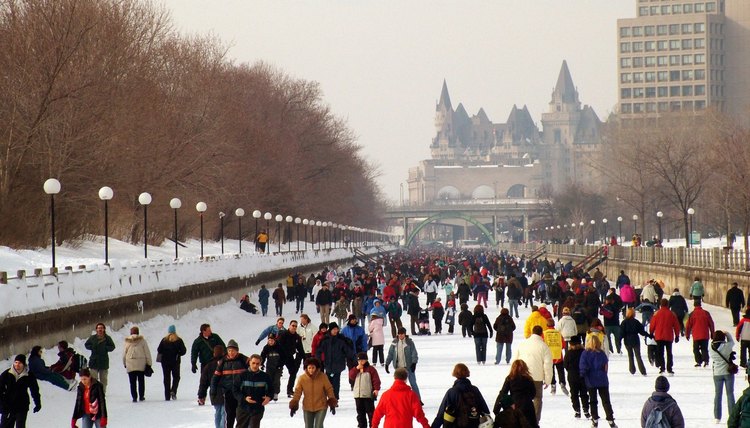Fun Facts for Kids About Ice Skating

If ice-skating is the latest sporting interest in your household, plenty of history, technical terms, world records and sporting facts can entertain your budding skater when she's not on the ice.
Terms
Ice skating has its own vocabulary. Ice skates have "teeth" at the front of the blades -- known as the toe pick. Skaters use them to dig them in the ice to help them jump and spin. "Stroking" refers to moving forward and backward, from one blade to another. A "camel" is a type of spin on one leg, and a "salchow" is a figure-skating jump.
History
People began ice skating thousands of years ago. The first skates were made of bones, which were strapped to the feet to allow people to cross frozen rivers and lakes. The first ice rink to be made indoors was in London, England, in 1941, when chemicals were used to make the frozen surface. The first frozen water ice rink opened to the public in 1876 in London. Rinks can now also be made using a special type of plastic instead of ice.
World Records
The most spins a skater has completed on one foot without stopping is 115, which was accomplished in New York in 2003. The record for the fastest spin on ice is 308 spins in one minute. Skaters have been known to reach speeds of up to 48km per hour on the ice during races. An ice-skating pinwheel is when skaters link arms and skate in a circle on the ice in a long line -- the record for the biggest pinwheel was made by a group of 70 children in 2010.
Ice Skating Sports
Ice skating started as a means of transport, but it is now mainly used for fun and in four separate sports. Speed skating involves an oval-shaped ice track on which men and women race at high speeds. Figure skating is skating to music using jumps and spins and can be done solo or in pairs. Ice hockey is a team game played on the ice using sticks, a puck and two goals. Ice dancing is similar to figure skating but involves high lifts.
References
Writer Bio
Lisa Walker began her journalism career in local newspapers. She later joined Teletext to work on its website and analogue and digital TV services. Walker spent time as a qualified childminder whilst raising her own two children and now enjoys a career writing and editing for various websites, including parent website Surreymummy.com.
